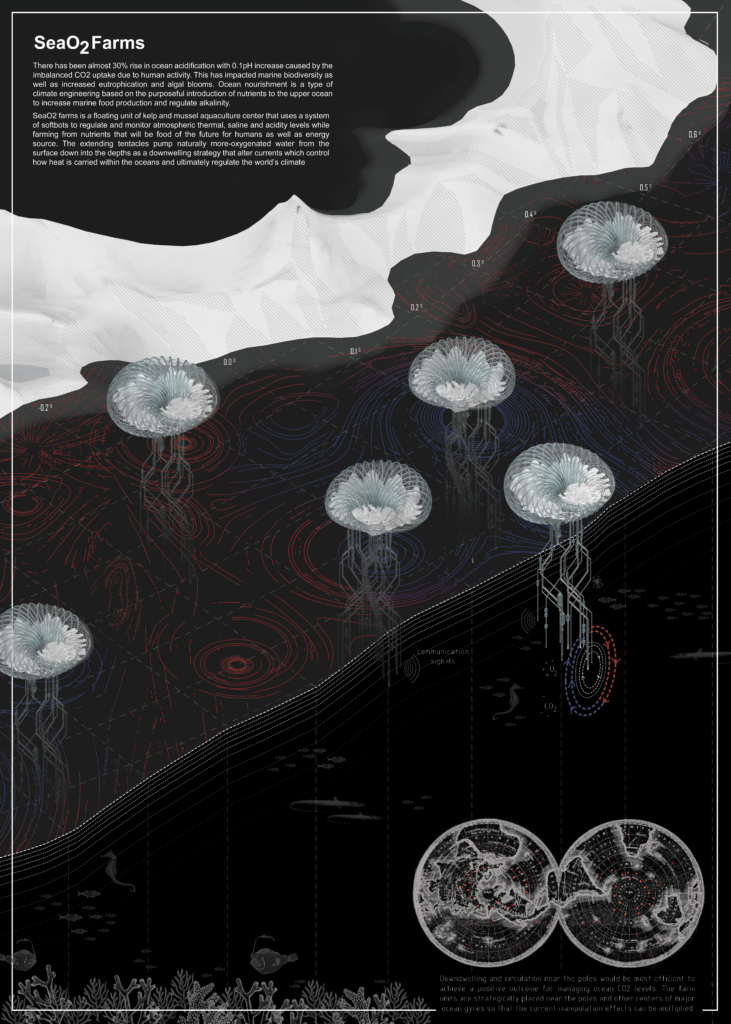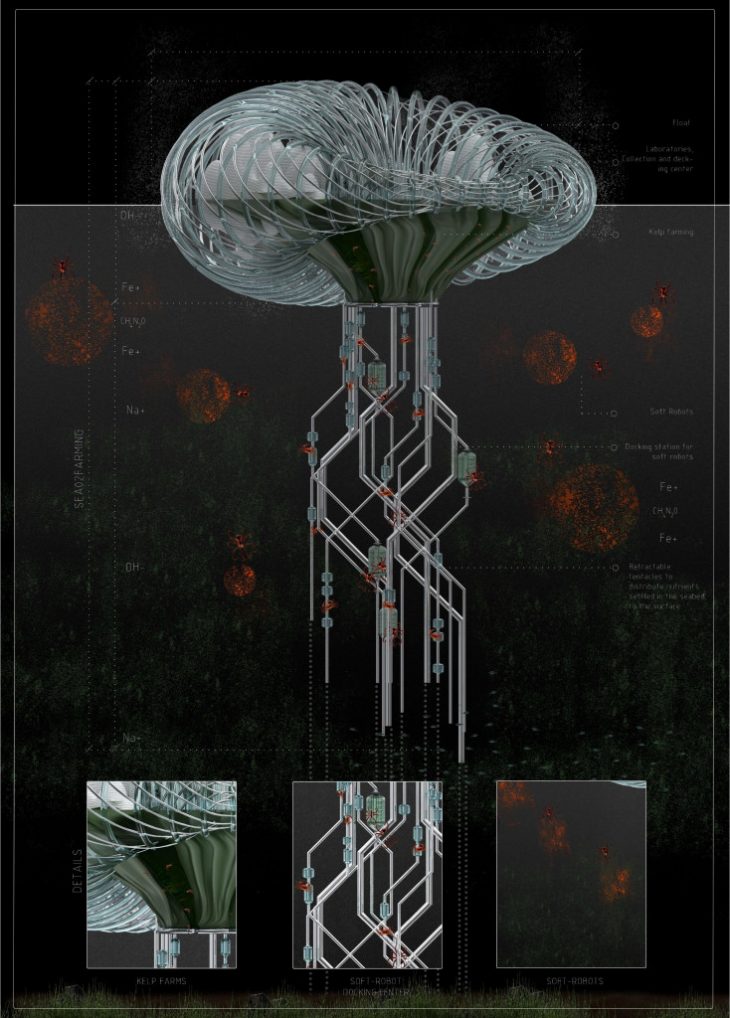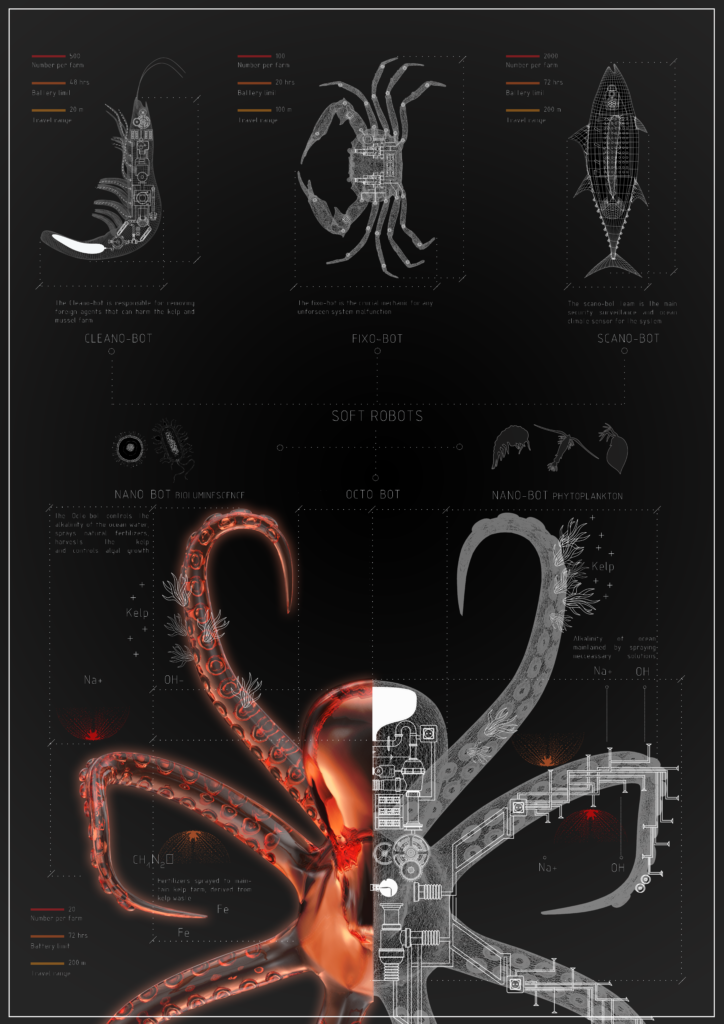SeaO2 Farms

Abstract
The oceans are a great carbon sink. It absorbs CO2 from the air as atmospheric concentration increases and it gets dissolved in the surface water. This water will mix down, or sink as it is cooled, into the deep sea where the absorbed CO2 can stay locked up for hundreds of years as it slowly moves through the deep interior ocean and back to the atmosphere.
Our research investigates how carbon sequestration process can be enhanced by the oceans. This will help in reducing carbon levels in the atmosphere. The approach to design is based on current practices of Marine Geo-engineering, which is the deliberate intervention by humans in the marine environment to manipulate natural processes, to counteract anthropogenic climate change and/or its impacts. One of the practices includes introducing ocean farming. Ocean farming is the method of growing seafood and other agricultural crops in the ocean. The main production intent of SeaO2farms would be kelp and mussels. Kelp absorbs 5x more carbon than land grown plants. Kelp and oysters also absorb nitrogen which is vital for restoring water quality. The underwater farm also performs as a coral reef that attracts different species and creates and maintains the ecosystem.
There has been almost 30% rise in ocean acidification with 0.1 pH increased caused by the imbalanced CO2 uptake due to human activity. This has impacted marine biodiversity as well as increased eutrophication and algal blooms. To counteract the detrimental effects of ocean acidification, ‘Ocean alkalinization’ has been introduced which is an approach that involves adding alkaline substances to seawater to enhance the ocean’s natural carbon sink. These substances could include minerals, such as olivine, or artificial substances, such as lime or some industrial by-products. Adding alkalinity to the ocean removes carbon dioxide (CO2) from the atmosphere through a series of reactions that convert dissolved CO2 into stable bicarbonate and carbonate molecules, which in turn causes the ocean to absorb more CO2 from the air to restore equilibrium. The technique used is by adding nutrients to the upper sun lit layers of the ocean to stimulate phytoplankton activity (photosynthesis) in an attempt to draw down atmospheric CO2 levels
SeaO2 farms is a floating unit of kelp and mussel aquaculture centre that uses a system of softbots to regulate and monitor atmospheric thermal, saline and acidity levels while farming from nutrients that will be food for humans as well as an energy source. The farms are inspired by the ‘Portuguese man of war’. It is a siphonophore, a unit of multiple organisms. It has numerous tentacles that have different functions and a inflated sail for movement.
Similarly the SeaO2 farm, has a floating deck and underwater farm. The tentacles of the farm host the soft-bots and also pump naturally oxygenated water from the surface down into the depths as a downwelling strategy. This alters currents which control how heat is carried within the oceans and ultimately regulate the world’s climate.



SeaO2 farms is a project of IAAC, Institute for Advanced Architecture of Catalonia developed at the Master in Advanced Architecture in 2022 by: Ariadna Gimenez, Neha Jayanth Pattanshetti, Vasudha Karnani ; Faculty: Mireia Luzárraga